Milk and Molasses – Magic for Your Garden
Do you know about the magic of milk and molasses in improving your garden? Yes, plain old milk of any kind – whole, 2%, raw, dried, skim, or nonfat – is a miracle in the garden for plants, soil, and compost. Molasses only boosts the benefits! Let’s see how and why they work.
Milk as Soil Food
Using milk on your compost and in your garden will probably come as a surprise to most.
Upon closer inspection, however, it starts to make sense. The amino acids, proteins, enzymes, and natural sugars that make milk a food for humans and animals are the same ingredients in nurturing healthy communities of microbes, fungi, and beneficial bacteria in your compost and garden soil.
Raw milk is the best, as it hasn’t been exposed to heat that alters the components in milk that provide the perfect food for the soil and plants, but any milk will provide nutrition and benefits. Using milk on crops and soils is another ancient technique that has been lost to large-scale modern industrial agriculture.
Milk is a research-proven fungicide and soft-bodied insecticide – insects have no pancreas to digest the milk sugars. Dr. Wagner Bettiol, a Brazilian research scientist, found that milk was effective in the treatment of powdery mildew on zucchini. His research was subsequently replicated by New Zealand melon growers who tested it against the leading commercially available chemical fungicide and found that milk out-performed everything else. Surprisingly, they also found that the milk worked as a foliar fertilizer, producing larger and tastier melons than the control group.
David Wetzel, a Nebraska farmer, completed a 10 year study on applying milk at different ratios to his pastures, and recorded the results with the help of a team made up of the local Agricultural Extension agent Terry Gompert , a university soil specialist, a weed specialist and an insect researcher.
What they found was amazing- the grass production was drastically increased; the soil porosity or ability to absorb air and water doubled; microbe activity and populations increased; cows were healthier and produced more milk on treated pastures; the brix or sugar level in the pasture tripled, indicating more nutrients were stored in the grass than before. Grasshoppers abandoned the treated pastures- the sugars are poison to destructive soft-bodied insects as they do not have a pancreas to process the sugars.
This also explains why damaging insects leave healthy, high-brix-level plants alone, as they contain more sugars than stressed and sickly ones. Read Milk Works As Fertilizer for the full article.
Home Gardener Recipe
For the home gardener, the ratio can range from 100% milk to a mixture of 20% milk to 80% water, with no loss of benefits.
Use as a spray on the compost and garden soil before planting and as needed when insects appear. Spray directly on the insects and around the areas they inhabit. When combined with molasses, it becomes a highly beneficial soil drench.
A proven solution is 20% milk – 1 cup of milk to 4 cups of water, or 2 cups of milk to 8 cups of water for larger gardens. Whatever amount you need, the 20% ratio has been proven to give the most effective results with the least amount of milk.
David Wetzel’s experiments found that 3 gallons of milk per acre benefits pasture grasses most, so the costs are minuscule compared to the benefits!
Molasses Feeds Micro-Organisms
Molasses is a viscous by-product of the processing of sugar cane or sugar beets into sugar.
Sulfured molasses is made from young sugar cane. Sulfur dioxide, which acts as a preservative, is added during the sugar extraction process. Unsulfured molasses is made from mature sugar cane, which does not require such treatment.
There are three grades of molasses: mild or Barbados, also known as first molasses; dark or second molasses; and blackstrap. The third boiling of the sugar syrup makes blackstrap molasses. The majority of sucrose from the original juice has been crystallized and removed. The calorie content of blackstrap molasses is still mostly from the small remaining sugar content. However, unlike refined sugars, they contain trace amounts of vitamins and significant amounts of several minerals.
Blackstrap molasses is a source of calcium, magnesium, potassium, and iron; one tablespoon provides up to 20% of the USDA daily value of each nutrient. Not only do these nutrients do a body good, they are highly valuable in building up the soil!
Molasses is a very valuable addition to the compost pile, as well as to the garden itself. Unsulfured blackstrap is the preferred variety due to the mineral content, but any of the unsulfured ones will do fine. The benefits beyond the minerals are the natural sugar content that will feed the microorganisms in the compost or soil of the garden.
More Gardening Recipes
Use 1/4 to 1/2 cup of molasses to a gallon of water and spray onto the compost pile or garden, or add to the drip system for the garden. For soils that are poor, stressed, or need help, use 1 cup; for those that need a little “snack, “use 1/4 cup. The readily available sugar content will skyrocket the microbial activity.
Apply once or twice a month, but be careful not to overdo it – don’t train the microbes to expect you to feed them, only give them a boost when they need it!
Blackstrap molasses is also commonly used in horticulture as a flower blooming and fruiting enhancer, particularly in organic hydroponics. Use the before mentioned mixture in the drip system, or sprayed alongside the roots of fruiting vegetables as they start to flower to increase their flowering and fruiting.
Add 3 Tablespoons of molasses to the milk spray solution mentioned above and use to feed plants during the height of growing season. Hungry, high production plants such as tomatoes, peppers, eggplant, melons, and such will really benefit from the consistent feedings, giving you more production that is more flavorful.
Sweet Weed Control
A fringe benefit of spraying the milk and molasses mixture on the garden is biologically friendly weed population control. Many broadleaf weeds thrive on diets high in available nitrates and potassium diets, common with commercial fertilizers. Phosphorus is “tied up” or bound with calcium in the soil and needs biological activity to release it. The calcium in milk helps to compensate for what is unavailable in the soil, while the increased biological activity from both the milk and molasses releases unavailable phosphorus and creates soil conditions that are unfavorable to the germination of weed seeds.
Minimal Costs
The costs of applying the milk and molasses mixture are minimal, but when compared to any other fertilizer and insecticide regimen – even those that are organic in nature – milk and molasses have no comparison.
For instance, one acre has 43,560 square feet, and a gallon is 128 oz.
Doing the math, we find that 3 gallons per acre is 0.003 of an ounce per square foot!
Assuming a gallon of organic milk costs $8.00, that works out to 0.00055 dollars per square foot or 0.055 cents per square foot! Yes, that is right – when rounded up, it is six-tenths of a penny per square foot of garden.
So if you had a large garden – say 1,000 square feet – one application of the milk would cost a whopping $0.55 (55 cents), plus the expense of 2 – 3 tablespoons of molasses. What other biologically friendly soil fertility improvements would cost this amount?
Here’s the proof of the math:
1 acre = 43,560 square feet (ft²)
1 gallon = 128 ounces
128 oz/43,560 ft² = 0.002938 oz/ft²
3 gallons x $8 = $24
$24/43,560 ft² = $0.00055/ft² multiply this by 100 for cents = 0.055 cents/ft²
Who knew that something as simple as milk and molasses had such powerfully positive, far-reaching effects? Especially without any of the negative effects of petrochemical fertilizers?

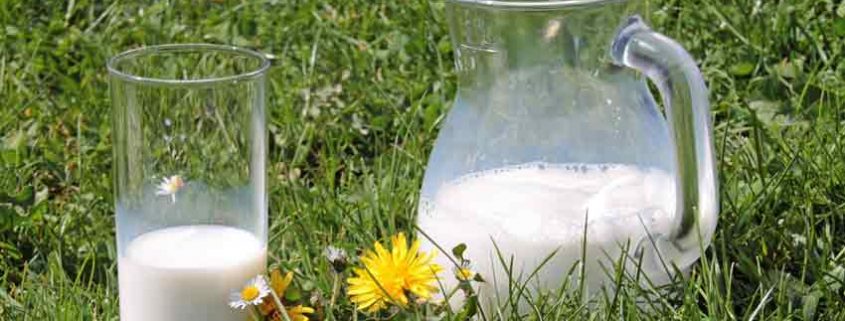
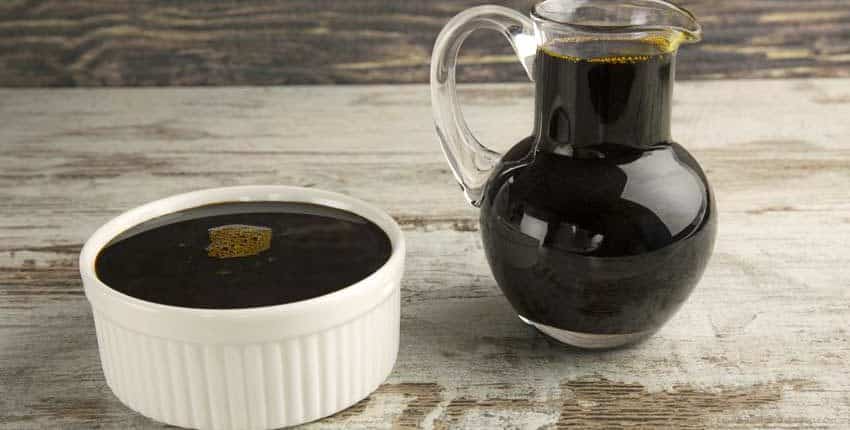

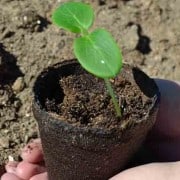


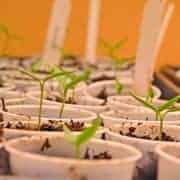
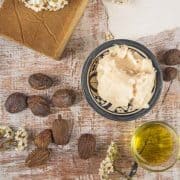


thank you so much for this article on milk and molasses as fertilizer!
You are welcome – enjoy!
Hello and thank you so much for your resources here on this sight. I’m a returning visitor and it is nice to refresh on some things. Just a question, should I wait for signs of flowering on peppers, eggplants and tomatoes before adding the mild/molasses mixture? I would like to give them a boast as I planted a little late and would like the benefits of the fungacide for the plants. The tomato plants are all about a foot tall, as well as some of the eggplant plants. Thanks for your time. And p.s I really enjoyed the sead saving post you made and the time and care you have for your fellowman. I’m a father with two small children and doing the best for them is always on my mind. I’ll be looking to purchase the seed kit soon.
Thanks James, we really appreciate your kind words!
You can feed the plants with the milk and molasses mixture anytime, but be careful not to feed too much or too often so that they become dependent on you for food and stop working in the soil. With getting them planted a bit late, I would recommend an initial application of a 20% milk solution (1 cup milk to 4 cups water) with a teaspoon of molasses, all mixed into a gallon of water and applied to the roots of the plants. Increase the amount based on your garden. Afterwards, I would feed the plants once a week with a 10% milk solution diluted into a gallon of water to help boost them. You can continue this weekly feeding throughout the season.